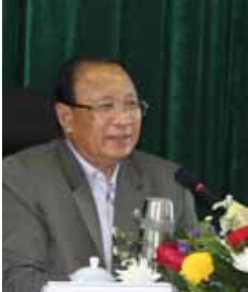Lao rice cooperatives have made good progress in terms of their rice production efforts but marketing and sales deficiencies are still causing problems for the co-ops.
Agricultural officials and representatives from model cooperatives in the provinces of Xayaboury, Khammuan, Savannakhet and Vientiane are currently meeting in Vientiane to exchange experiences on rice planting techniques and discuss issues related to production and marketing.
Despite the government, especially the Ministry of Agriculture and Forestry, having launched various initiatives to encourage farmers to boost their yields through new techniques the sale of the surplus rice produced is still proving difficult.
Problems with marketing and sales include the instability of the rice price, farmers’ lack of understanding about rice standards and quality controls, planting of old rice varieties instead of those in high demand in regional markets as well as the lack of contractual arrangements between farmers groups and rice millers and marketers.
Some cooperatives are adopting modern methods including machines, especially tractors, even though most of their rice plots are small.
However some fields have not been properly levelled while there may be no good warehouses to store the rice after it is harvested.
New planting and farming methods, as well as better rice varieties, need to be adopted by farmers if they wish to increase their yields while larger and properly levelled rice plots are preferable where possible.
O f course, a reliable water supply is an essential prerequisite to the production of a good rice crop. Minister of Agriculture and Forestry, Dr Lien Thikeo believed that the seminar will help to promote the new rice production methods for expansion around the country in order to reduce capital and food security.
After the meeting, he stressed to agricultural officials to bring the problems for improvement and resolution in the near future.
Many farmers in different areas are still planting their rice crops by traditional methods, which result in reduced yields and large amounts of labour.
Still, thanks to the government’s efforts, each year farmers are able to produce yields that match the government’s plan and quantities have continued to increase every year.
Rice production in Laos for 2012-13 reached about 3.52 million tonnes while 4.12 million tonnes was harvested in 2015-16. This was sufficient for domestic consumption and a surplus was produced for export.
Next year, the government plans to expand the area of rice cultivation by 1.03 million hectares for a yield of 4.35 million tonnes with an average yield of five tonnes per hectare.
About 100,000 tonnes of the rice harvested will be used as seeds while 2.5 million tonnes will be used for consumption within Laos.
Source: Vientiane Times



